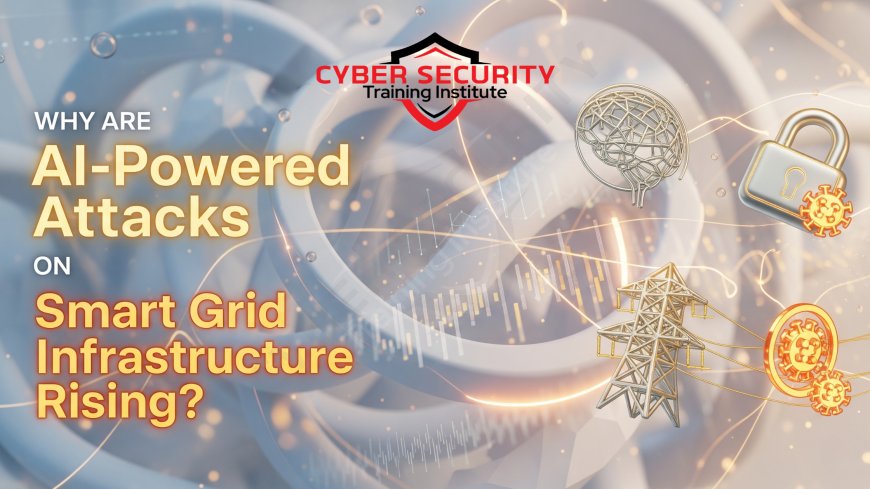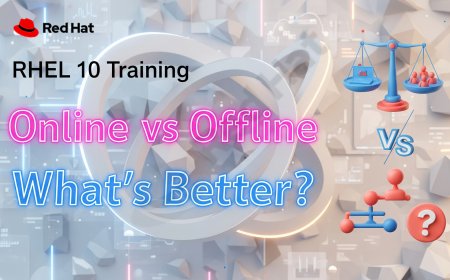Why Are AI-Powered Attacks on Smart Grid Infrastructure Rising?
The very intelligence that makes our power grids "smart" in 2025 has also made them a prime target for a new generation of AI-powered cyberattacks. This in-depth article explores the rising threat of attacks against smart grid infrastructure and why they are becoming more common. We break down how sophisticated, nation-state adversaries are using their own AI to weaponize the grid: conducting automated reconnaissance to find weak points, launching stealthy "data poisoning" attacks to trick the grid's own AI into causing blackouts, and orchestrating "swarm" attacks from compromised smart devices to create physically damaging power surges. The piece features a comparative analysis of traditional, manual grid hacks versus these new, intelligent, and system-wide AI-powered campaigns. We also provide a focused case study on the risks facing the modernizing power grid in a high-tech, tourism-dependent state like Goa, India, where a successful attack could have a devastating economic impact. This is an essential read for anyone in the energy, critical infrastructure, and national security sectors seeking to understand the new kinetic threats of the AI era and the sophisticated, AI-powered defenses required to keep the lights on.

Introduction: The Weaponization of the Power Grid
The electrical grid is the most critical piece of infrastructure in any modern nation; it's the foundation upon which everything else is built. For a century, this grid was a relatively simple, mechanical system. But in 2025, our grid is now a "smart grid"—a complex, interconnected, and intelligent network of sensors, smart meters, and AI-powered control systems. This intelligence has made our power supply more efficient and reliable. But it has also made it a prime target for a new and terrifying form of cyber warfare. AI-powered attacks on smart grid infrastructure are rising because the grid's massive, interconnected attack surface is a perfect target for AI reconnaissance, its reliance on AI for load balancing can be exploited by data poisoning, and the potential for causing widespread, physical blackouts makes it the ultimate objective for nation-state adversaries.
The Smart Grid: A Nation-Scale Cyber-Physical Attack Surface
The reason the smart grid is such an attractive target is its unique nature as a massive, distributed "cyber-physical system." This means it's a system where digital controls have a direct and immediate effect on the physical world. The attack surface is enormous and complex.
- A "System of Systems": The grid isn't a single thing. It's a vast network of power generation plants, high-voltage transmission substations, local distribution networks, and, most importantly, millions of new "edge" devices like smart meters in our homes and sensors on the power lines.
- The IT/OT Convergence: The smart grid forces the convergence of two traditionally separate worlds. The corporate Information Technology (IT) network of the utility company is now deeply connected to the physical Operational Technology (OT) network that controls the flow of electricity. This connection creates a bridge for hackers to cross from the digital world into the physical one.
- The IoT Explosion: Millions of smart meters and other grid sensors are, in reality, small, simple Internet of Things (IoT) devices. As we've seen in other sectors, these devices are often deployed with weak security, creating countless potential entry points for an attacker to gain an initial foothold on the grid.
The Attacker's AI Toolkit for the Grid
Sophisticated attackers, particularly those backed by nation-states, are now using a specialized toolkit of AI-powered weapons to target this complex environment.
- AI for Reconnaissance: An attacker can use an AI to model the entire grid of a target nation. The AI can analyze public utility maps, technical manuals for grid equipment, and even social media profiles of utility engineers to map out the most critical substations and identify the specific types of Industrial Control Systems (ICS) and SCADA software they use. This automates the process of finding the weakest and most high-impact points in the network.
- AI for Sabotage (Data Poisoning): The "brain" of a modern smart grid is a central AI-powered load-balancing system. This system's job is to predict power demand across the country and allocate the supply from different power plants to meet that demand efficiently. An attacker can use a "data poisoning" attack to fool this brain. By compromising a few thousand smart meters and using their own AI to slowly feed the central system false, but plausible-looking, energy consumption data, they can corrupt the grid's understanding of reality. This could trick the grid's AI into making a catastrophic decision, like shutting down a needed power plant or dangerously overloading a critical transmission line, causing a cascading blackout.
- AI for Coordinated Physical Attacks: An AI can orchestrate a "swarm" attack using a botnet of compromised smart devices. For example, an attacker could instruct millions of smart air conditioners or electric vehicle chargers in a major city to all turn on to their highest consumption mode at the exact same millisecond. This would create a massive, instantaneous power surge that the grid was not prepared for, potentially causing physical damage to local transformers and substations. .
The Goal: Kinetic Impact and Geopolitical Leverage
The primary goal of a smart grid attack is not to steal data; it's to cause a kinetic impact—a real-world, physical consequence. The ability to control a nation's power supply is one of the most powerful forms of leverage in a geopolitical conflict, short of actual military action.
A successful, large-scale attack can achieve several strategic goals for an adversary. It can cause a prolonged blackout in a major economic or military center, leading to massive economic disruption and civil unrest. It can be used as a tool of coercion during a political crisis, with the attacker holding the power supply of a city hostage. In its most extreme form, a sophisticated attack can be designed not just to cause a temporary outage, but to send power surges that physically destroy expensive and hard-to-replace equipment, like large transformers. Such an attack could cripple a region's power supply for months or even years, representing a devastating act of infrastructure warfare.
Comparative Analysis: Traditional vs. AI-Powered Grid Attacks
AI transforms a grid attack from a localized, manual hack into a widespread, intelligent, and strategic campaign.
| Aspect | Traditional Power Grid Attack | AI-Powered Smart Grid Attack (2025) |
|---|---|---|
| Attack Method | Relied on manually hacking into a single, isolated OT system (like the Stuxnet attack). It required deep, specialized knowledge of one specific system. | Uses AI to model the entire grid ecosystem to find the most effective, system-wide point of failure and attack vector. |
| Primary Tactic | The direct, often noisy, manipulation of a single industrial controller or a specific piece of SCADA software. | The stealthy use of data poisoning to trick the grid's central AI into causing the failure itself, or a coordinated surge attack from thousands of IoT devices. |
| Scale & Coordination | The attack was often localized and focused on a single power plant or substation. Co-ordination was manual and difficult. | The attack can be highly coordinated and geographically widespread, with an AI orchestrating thousands of devices to affect an entire region's grid simultaneously. |
| Stealth | A direct attack on an OT system, while damaging, was often a "loud" and more easily detectable event on the network. | Data poisoning attacks are extremely stealthy, as the grid's own legitimate AI is the one that executes the damaging action, masking the attacker's involvement. |
| Strategic Goal | The goal was often to disrupt or destroy a specific, targeted piece of high-value equipment. | The goal is often to cause systemic instability and cascading failures across the entire interdependent grid for maximum geopolitical impact. |
Goa's Modernizing Grid: A Tourist Paradise at Risk
In 2025, the state of Goa is in the midst of a major project to modernize its power grid. This is a critical investment to support its booming tourism industry and the growing population of remote tech professionals who have relocated to the state. This modernization involves rolling out a new generation of smart meters, deploying sensors on transmission lines to predict outages during the monsoon season, and using a central AI platform to manage the highly variable load from the state's many hotels, resorts, and data-intensive tech workers.
This new, efficient, and interconnected smart grid, however, also creates a new, high-value target. The state's economy is almost entirely dependent on a functioning tourism sector, and the tourism sector is entirely dependent on a reliable power supply. A nation-state adversary, seeking to create economic and political turmoil in India, could see Goa's grid as the perfect soft target. They could launch a slow, stealthy, AI-powered data poisoning campaign, compromising the smart meters at several large, power-hungry coastal resorts. Over several weeks, they could feed the central grid's AI slightly manipulated data that masks the true energy consumption of these resorts. Then, during the peak of the tourist season, the grid's AI, working from a corrupted and inaccurate baseline, would be completely unprepared for the real power demand. This mismatch could lead to a cascading failure, causing a prolonged blackout across the coastal tourist belt. The attack would cripple the state's economy and cause chaos, all achieved by turning the grid's own intelligence against it.
Conclusion: The AI Battle for the Lights
The very intelligence that makes our power grids "smart" and efficient has also made them a top-tier target for a new generation of AI-powered cyberattacks. The threat has evolved from simply hacking a single power plant to manipulating the entire, interconnected system to cause its own failure. The consequences are no longer just digital; they are physical, with the potential to cause widespread, kinetic damage to our most critical national infrastructure.
Securing the smart grid requires a new, holistic security paradigm. The old walls between IT and OT security must come down. The defense must be as intelligent and as integrated as the grid itself. This requires the deployment of AI-powered security monitoring across the entire grid, from the smart meter in a home to the central control system, that can detect the subtle, statistical anomalies that signal a data poisoning or a coordinated surge attack. The lights will only stay on in the 21st century if our defensive AI is smarter, faster, and more resilient than the malicious AI trying to turn them off.
Frequently Asked Questions
What is a smart grid?
A smart grid is a modernized electrical grid that uses information and communication technology, including IoT sensors and AI, to improve the efficiency, reliability, and sustainability of the electricity network.
What is the difference between IT and OT?
IT (Information Technology) refers to the systems that manage data, like corporate servers and laptops. OT (Operational Technology) refers to the systems that manage physical processes and machinery, like the control systems in a power plant.
What is a "kinetic" cyberattack?
A kinetic cyberattack is one that has a direct, real-world physical consequence. An attack that causes a power blackout or destroys a piece of electrical equipment is a kinetic attack.
What is data poisoning in this context?
It's an attack where a hacker subtly manipulates the data being sent from sensors (like smart meters) to the grid's central AI. This corrupts the AI's understanding of reality, causing it to make bad decisions that can destabilize the grid.
Why is Goa's power grid a potential target?
Because its economy is extremely dependent on tourism, and the tourism industry is extremely dependent on a reliable power supply. A successful attack that causes a blackout would have a disproportionately large economic and social impact.
What is a SCADA system?
SCADA (Supervisory Control and Data Acquisition) is a type of industrial control system that is commonly used to monitor and control the equipment in critical infrastructure like power grids and water systems.
What is a smart meter?
A smart meter is a new kind of electricity meter that, unlike old meters, can send and receive data in real-time. They are a key component of the smart grid but also a potential entry point for hackers if not secured properly.
How can hackers cause a blackout with AI?
They can use two main methods: data poisoning to trick the grid's own AI into making a mistake that causes an outage, or using an AI-coordinated botnet of smart devices to create a sudden power surge that overloads the system.
What is a "cascading failure"?
A cascading failure is a failure in a system of interconnected parts in which the failure of one part triggers the failure of successive parts. This is a major risk in a highly interconnected power grid.
What is "load balancing" in a power grid?
Load balancing is the critical process of constantly matching the amount of electricity being generated by power plants with the amount of electricity being consumed by homes and businesses. A failure in this process can cause a blackout.
Who is behind these kinds of attacks?
Attacks of this scale and sophistication, which target a nation's critical infrastructure for the purpose of causing widespread disruption, are almost always carried out by well-funded, state-sponsored hacking groups.
What is an IoT botnet?
An IoT botnet is a network of compromised Internet of Things devices (like smart meters or cameras) that are controlled as a group by an attacker. An AI can be used to coordinate their actions.
Can my home's smart devices be used in an attack on the grid?
Yes. If you have a high-consumption smart device, like an electric vehicle charger or a smart air conditioner, and it is compromised, it could be used as part of an AI-coordinated swarm to create a power surge.
What is an "air gap"?
An air gap is a security measure where a secure network (like an OT network) is physically isolated from any unsecured networks (like the internet). The smart grid, by necessity, has to bridge this gap.
How do you defend a smart grid?
Through a holistic, "defense-in-depth" strategy. This includes securing every IoT device, using strong network segmentation, and deploying a powerful, AI-driven security monitoring platform that can detect anomalous behavior across both the IT and OT networks.
What is a "brownout"?
A brownout is an intentional or unintentional drop in voltage in an electrical power supply. It's a partial outage that can still damage equipment. An attacker could try to induce one as a form of disruption.
What is "geopolitical leverage"?
It's the ability of one country to influence another country's decisions through non-military means. The ability to threaten a rival's power grid is a powerful form of geopolitical leverage.
What is a transformer in a power grid?
A transformer is a critical piece of equipment used to increase or decrease the voltage of electricity. Large, high-voltage transformers are very expensive, custom-built, and can take years to replace, making them a prime target for physical sabotage via a cyberattack.
Is this a real threat in 2025?
Yes. While large-scale, successful attacks are still rare, nation-states are actively developing these capabilities, and smaller-scale probing and intrusions are happening regularly. It is considered a top-tier national security threat.
What is the number one challenge for securing the smart grid?
The number one challenge is its sheer scale and complexity. It's a vast, interconnected "system of systems" that blends modern IT with legacy OT, making it incredibly difficult to monitor and defend in a unified way.
What's Your Reaction?
 Like
0
Like
0
 Dislike
0
Dislike
0
 Love
0
Love
0
 Funny
0
Funny
0
 Angry
0
Angry
0
 Sad
0
Sad
0
 Wow
0
Wow
0
















